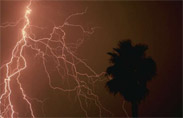

Lecture 17 - Environmental Chemodynamics
See Lecture Schedule for Delivery Date
Learning Objectives
- List the thermodynamic functions used to describe the energy status of molecules in an environmental system.
- Understand the relationship of Gibb’s free energy and chemical potential in the transfer or transformation of chemicals in a system.
- Develop a basic understanding of fugacity and its role in environmental transformations.
- Define activity and its relationship to concentration.
- Understand the concept of energy bookkeeping and the relationship of Gibb’s free energy to enthalpy and entropy in an phase transformation or chemical reaction.
- Develop a basic understanding of first order and psuedo-first order chemical kinetics including integrated rate expressions, half-lives and T dependence.
- Understand the compartment model of the ecosphere.
- Understand the partitioning of chemicals and how partition constants are used in describing environmental systems.
- Understand the basic approaches to modeling chemodynamics and the usefulness and limitations of model use.
eTOX Lecture 16 from Professor Greg Möller on Vimeo.
Listen online or Download here
Advanced Reading
- Chemical Kinetics Online Review
- Chemical Kinetics Overview Tutorial
- Chemical Energetics (for review)
- Thermodynamics of Chemical Equilibrium (for review)
- What are environmental models?l
Resources
Keywords
- Chemodynamics
- Thermodynamic equilibrium
- Chemical potential
- Activity coefficient
- Gibb's free energy
- Enthalpy
- Entropy
- Fugacity
- Reference state
- Standard state
- Partitioning
- Dissolution
- Volatilization
- Solute
- Solvent
- Polar
- Non-polar
- Partition coefficient
- Bioconcentration factor
- Biomagnification
- Henry's Law
- Rate of reaction
- Chemical kinetics
- Integrated rate expression
- Reaction half-life
- Adsorption
- Desorption
- Chemisorption
- Isotherm
- Ecosphere compartment
- Atmosphere
- Biosphere
- Hydrosphere
- Lithosphere
- Environmental system model
- Mass balance model
Suggested Reading

ETox is licensed under a Creative Commons Attribution-NonCommercial-NoDerivatives 4.0 International License.
